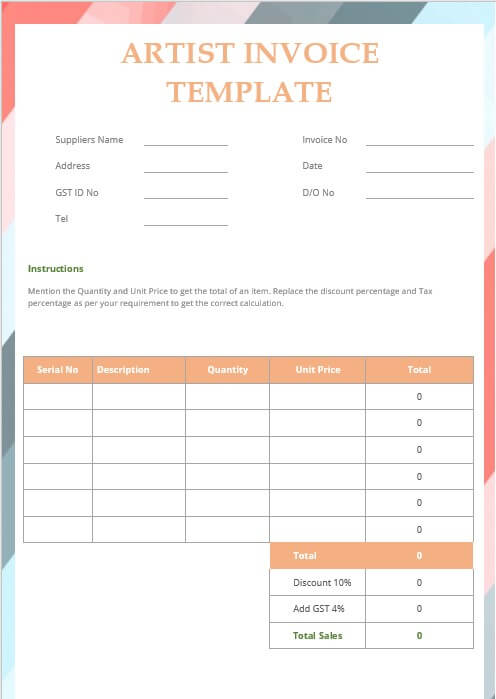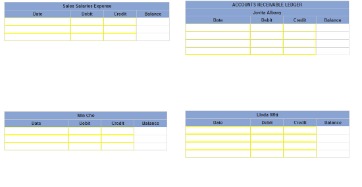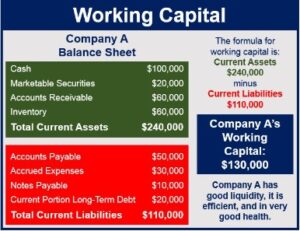
Keep track of your unpaid and overdue invoices, bank account balances, profit and loss, cash flow, and bills to pay. The mobile app is free with every subscription, and is compatible with iOS and Android. Learn about the eight core bookkeeping jobs, from data entry to reporting and tax prep. Once you’re set up in Xero you can import all your data from your previous accounting software, including the chart of accounts, invoices, bills, contacts, and fixed assets. We recommend you work with an accountant or bookkeeper, preferably one with Xero experience, when you move to Xero online accounting software in the US.
Use the demo company to explore Xero’s features, or enter your own business details and data to try it out for real. Xero retains everything you’ve entered when you transfer from a free trial to a subscription. Summarizing this review, Xero emerges as a potent how to prepare and analyze a balance sheet examples accounting solution, particularly for small to medium-sized businesses. Its strengths lie in its user-friendly interface, comprehensive feature set, and flexibility offered through various integrations. While it might fall short for larger enterprises with complex, specific needs, it remains a formidable option for its target market. Xero provides out-of-the-box integrations with a plethora of third-party applications across e-commerce, point-of-sale, time tracking, and more, enhancing its functionality.
Get started with the basics
You can receive automated bank feeds into your accounting software and connect to other business apps for greater efficiency. You can also collaborate with other people, like accountants and bookkeepers, by giving them access to view and share your figures. Xero regularly backs up your data and protects it with multiple layers of security. Manage your cash flow, track expenses, accept payments online, and much more – all without leaving Xero.
A bookkeeper what is a flexible budget can also offer support to business owners who feel like they’re working alone. Its ability to give a clear, comprehensive financial snapshot stands out, especially valuable for decision-makers needing clarity without sifting through complex data. In essence, Xero harnesses technology to offer efficiency, a clear overview, and above all, business financial transparency. Find out what bookkeepers do, and get an intro to double-entry bookkeeping. You should consult your own professional advisors for advice directly relating to your business or before taking action in relation to any of the content provided.
Keep in mind that these services charge a fee to process payments (usually around 2.9% plus 25 cents per transaction, though this varies by the payment processor). Learn about the core bookkeeping jobs, from data entry to bank rec, reporting and tax prep. Xero is a great option for large teams and small- to medium-sized businesses that need high-level accounting systems. It’s also a good fit if you want to integrate Gusto Payroll to your accounting platform. Xero, FreshBooks and QuickBooks all offer 30-day free trials and extensive features for online support, including a live chat, email support and a knowledge base. All three of these offer the ability to scale their accounting for larger businesses and both Xero and QuickBooks offer specific training for accountants.

Do I need accounting software for my small business?
This in-depth Xero review will walk you through the tool’s pros and cons, features and functionality, and more to help guide you to better understand its capabilities and its suitability for your needs. In this thorough review, I will evaluate Xero’s best (and worst) use cases, target audience, pros and cons, and more. After a 30-day trial period, Xero will bill a monthly charge of $13 per month for the Early plan, $37 per month for the Growing plan and $70 per month for the Established plan. For free invoicing platforms, consider Zoho Invoice, Square Invoices or PayPal Invoicing, although these platforms provide fewer capabilities. Simplify your finances and get more done with Xero online accounting software. Complete these lessons to record business transactions and maintain your financial data regularly.
What is better: QuickBooks or Xero?
Xero has pricing plans to suit your business, no matter its size or stage. Xero accounting and bookkeeping partners can also offer basic plans to clients who just need the essentials. We’re upfront about pricing, and provide full details of our pricing plans and optional extras. Where a feature is listed as an add on (like Xero Payroll, Xero Projects, Xero Expenses and Analytics Plus), its pricing depends on the number of users who use the add on each month. Xero is a New Zealand-based public technology company that specializes in cloud-based accounting software for small and medium-sized businesses.
- Then again, QuickBooks requires user limits for each plan while Xero doesn’t.
- Reconciliation involves regularly cross-referencing your business books against your bank statements to check that the transactions and balances match – and identifying the reasons if they don’t.
- Navigating Xero is relatively straightforward once you get accustomed to the interface, which is designed with clarity and simplicity in mind.
- Xero’s bank feed securely imports your transactions into the Xero accounting software each business day.
- You probably already know that Xero is among the most popular accounting tools out there, but you need to better understand what’s good (and not so good) about it.
But first, if you’re just beginning your search for the best accounting tools, check out my picks for the best accounting software. You probably already know that Xero is among the most popular accounting tools out there, but you need to better understand what’s good (and not so good) about it. While Xero’s plans start at a cheaper price, QuickBooks offers more features across its plans. Then again, QuickBooks requires user limits for each plan while Xero doesn’t.
Established companies and growing businesses alike have adopted Xero for its modern approach to financial management. The company is publicly traded and headquartered in Wellington, New Zealand, with notable figures like Steve Vamos (CEO) steering its vision. Navigating Xero is relatively straightforward once you get accustomed to the interface, which is designed with clarity and simplicity in mind. However, the initial learning curve can be steep, especially for those new to digital accounting solutions. The onboarding process is comprehensive, offering setup assistance and a step-by-step guide, yet some users free consulting invoice template might find the abundance of features overwhelming at first. The software organizes financial information efficiently, but mastering full utilization of its reporting features can take time.



